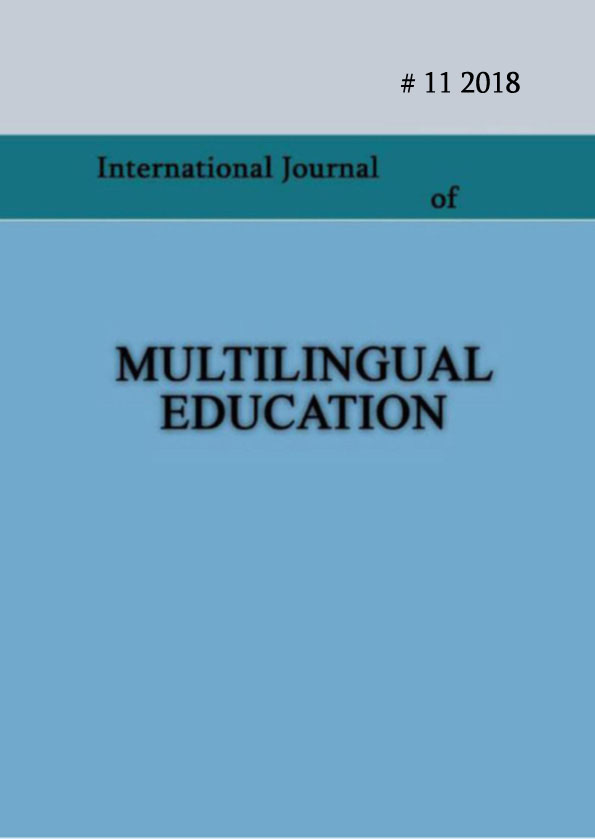The principle methods of teaching the second language and the ways of its practical realization
Keywords:
language teaching, methods, practice.Abstract
Proper implementation of the state language policy is always a priority of any country. Due to this fact a process of integration within a multilingual society remains an actual problem amongst the current challenges of the Georgian state, the strategic aim is avoiding the phenomena of the so called glottophagical character, which means a pressure of the dominant language, in our case, of the Georgian language onto other languages functioning in the country. Learning the state language to the ethnic minorities is possible to be realized only through the mutual agreement of both parties. In such a case, a free will of various ethnic groups on the one hand and liabilities of the state are considered on the other hand. F. De Saussure notes: “We know the languages mainly in written forms“ (Saussure 2002: 34) and indeed, even in the native language the intermediate link (member) of cognition is mainly the written source which we otherwise call the textbooks . This very basic knowledge starts a practical and active usage of the language which should be realized both in the domestic, household, professional and social-cultural spheres.
Teaching the language itself is not a simple process, consequently, a systematic methodological approach is of fundamental importance. The communicative functioning of the language is performed through separate linguistic symbols: and the latter includes in itself the subsystems of lexical and grammar modeling and the methods of their correct employment. Construction of a language textbook based on the four-componential basis (1. The text [lexis]: 2. Comprehension of the text, 3. Listening, 4. Writing prepares a learner for a motor stage and opens up a wide social environment, This International standard also creates a psychophysiological mood as well
– to perceive the second language as an ethno-cultural characteristic of the people speaking it . In the textbook created by us there are envisaged both the general didactical and linguistic methods. The textbook serves the purpose according to which the learner – student will be able to develop a number of skills, including, first of all, the communicative and projecting skills (i.e. the ability to formulate the material).
One of the main goals regarding creating the textbook (The Georgian Language - Law” [the limit level B1+]) was to ease the process of teaching of the Georgian language so that morphologically marked categories were not be left beyond the vision;
That is why while explaining the grammatical forms we took into account the role of the visual memory and allocated specially selected material on special “boards” created on the basis of porcelation. The compex structure of Geogian as a complex agglutinaive language is supplied to the learner mainly on the level of communicative grammar. Teaching the Georgian language is given in the context of ESP (Specifically, in the language of law) at the end of not only communicative competence but professional language skills are also improved .
We have also envisaged ethnocultural linguistic aspects, in this case those of the Georgian language ethnic group, and by the end of each teaching chapter considerable space is allotted to frequently used phraseological word combinations. Supplying students with such forms enhances the further process of modeling of the speech act and strengthens its communicative component. This and many other methodologically selected linguistic segments serve as a foundation for the textbook of the Georgian language created by us based on the language as a polyphonic concept. This ESP textbook “The Georgian Language – Law” is a novelty in the pedagogical space. It creates mainly a linguistic basis and simultaneously shows the ways to the foreigners living in Georgia to their professional activities.
References
De Sossiur, 2002 - de Sossiur, F. (2002) Course of General Linguistics, Tbilisi. Publishing House “Diogene” (in Georgian).
Evans, 2011 - Evans, V., Dooley, J. & Smith, D.J. (2011) Law (Career Paths), Made in EU, Express Publishing.
Feler, 1984 - Feller M.D. (1984) “The Style and Sign”, Lvov, Ed. “VIsha Shkola” (in Russian)
Kegl, 1962. - Kegl ,The Explanatory Dictionary of the Georgian language (1962). Under general edition of Arn. Chikobava. V.7. Tbilisi Publishing House of the The Academy of Sciences of the Geogia SSR (in Georgian).
Komenski, 1957 - Komenski, Y. A. (1957) “The World of sensitive things in pictures”, Editor: A.A.Krasnovsei, M., “Uchpedgiz”/ (in Russian).
Pochkhua, 1974 - Pochkhua, B. (1974), The Lexicology of the Georgian language. TSU Publishing house (in Georgian).
Uznadze, 2004 - Uznadze, D. (2004) Relativity Psychology, Tbilisi Publishing House “Color” (in Georgian).
Downloads
Published
How to Cite
Issue
Section
License
Copyright (c) 2018 Inga Sanikidze

This work is licensed under a Creative Commons Attribution-NonCommercial 4.0 International License.
Copyright (c) - Authors who publish with this journal agree to the following terms: Authors retain copyright and grant the journal the right of first publication with the work simultaneously licensed under a Creative Commons Attribution-Noncommercial 4.0 International License, which allows others to share the work with an acknowledgement of the work's authorship and initial publication in this journal. Authors are permitted and encouraged to post their work online (e.g., in institutional repositories or on their personal website) prior to and during the submission process, as it can lead to productive exchanges, as well as earlier and greater citation of published work (see The Effect of Open Access). Authors may enter into separate, additional contractual arrangements for the non-exclusive distribution of the journal's published version of the work (e.g., post it to a repository or publish it in a book), with an acknowledgement of its initial publication in this journal.

